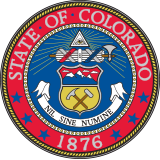Advanced Industry Investment Credit
Report No. 2021-TE15

Second Regular Session | 74th General Assembly
Colorado General AssemblyReport No. 2021-TE15
Report No. 2021-TE16
Report No. 2021-TE17
Report No. 2021-TE18
Report No. 2021-TE19
Report No. 2021-TE20
Report No. 2021-TE21
Report No. 2021-TE22
Report No. 2021-TE23
The Appropriations Report summarizes the final action of the General Assembly and the Governor on the budget and other legislation passed during the previous legislative session that contained an appropriation of moneys.
Three bills were enacted during the 2021 legislative session that substantively impacted the financing of public schools in Colorado:
Report No. 2021-TE24
Report No. 2021-TE25
Report No. 2021-TE26
Report No. 2021-TE
The Sales and Use Tax Simplification Task Force (task force) was originally created in 2017 pursuant to House Bill 17-1216. In its original form, the task force was scheduled to be repealed in 2020. However,...
Summary report for the Legislative Oversight Committee Concerning Tax Policy & Task Force.
Pursuant to state law (Section 26-6.5-203, C.R.S.), the Early Childhood and School Readiness Legislative Commission (ECSRLC) may meet up to four times per year to study issues concerning early childhood and school readiness.
This memorandum provides information on state tax expenditures for renewable energy resources. State tax expenditures include individual and corporate income tax credits, deductions, and exemptions, and sales and use tax exemptions. Renewable energy resources include solar, wind, geothermal,...
The state incurs wildfire-related expenditures in several departments for various activities including wildfire prevention, preparedness, mitigation, suppression, and recovery. These activities are not explicitly broken out in the state budget and are spread across various line items in...
Final Report to the Colorado General Assembly by the Legislative Oversight Committee Concerning Tax Policy.
Focus Colorado presents forecasts for the economy and state government revenue through FY 2019-20. Implications of the forecast for the state's General Fund budget and spending limit are described in the report's highlights and executive summary sections. The report is based on current law,...
Pursuant to state law (Section 26-6.5-203, C.R.S.), the Early Childhood and School Readiness Legislative Commission (ECSRLC) may meet up to four times per year to study issues concerning early childhood and school readiness.
Pursuant to Section 22-55-104 C.R.S., Legislative Council Staff, in consultation with the State Auditor, the State Treasurer, the Department of Education, the Office of State Planning and Budgeting, and the Joint Budget Committee, is required to conduct a review of the model used to forecast...
Pursuant to Section 22-55-104 C.R.S., Legislative Council Staff, in consultation with the State Auditor, the State Treasurer, the Department of Education (CDE), the Office of State Planning and Budgeting, and the Joint Budget Committee (JBC), is required to conduct a review of the model used to...